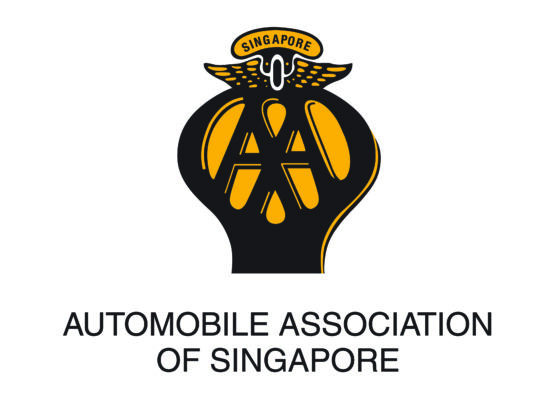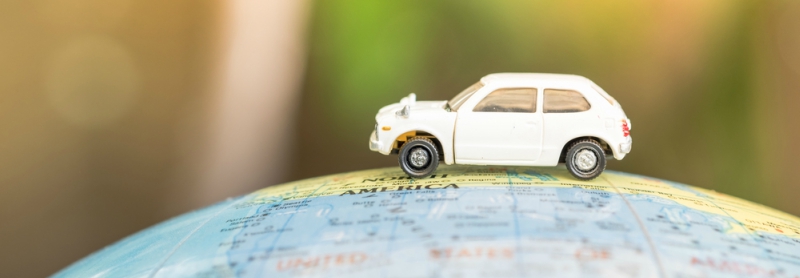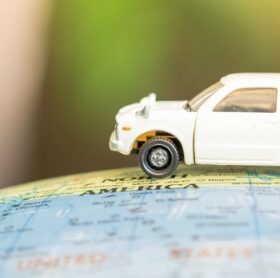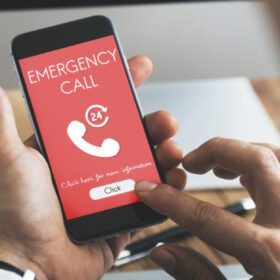Despite the differences in language and driving styles, making that foreign roadtrip is few simple rules and tips.
Perhaps the best way to really explore a foreign country is by driving. You can plan your own route, go according to your own schedule and make a stop wherever you feel like it to enjoy the scenery. Basically, you’ll get a lot out of your holiday from driving.
DOCUMENTS YOU’LL NEED
Before you set off on a big driving adventure be sure that the following documents are always with you:
- Valid driving licence
- Valid international driving licence – this is meant to complement your local driving licence and the two should always be used together
- Keep your passport with you all times in case of spot checks and for identification purpose
- Vehicle registration and insurance documents. If you’re renting your car, the rental company will provide the relevant paperwork. If you’re borrowing a car from a friend or relative, be sure that the registration and insurance coverage is current
- Travel insurance – falling ill or running into other emergencies when you’re abroad is often an expensive and inconvenient experience, be sure that you always have travel insurance with you for these situation
OTHER THINGS TO REMEMBER
As with driving on local roads, safety must always be a prime consideration. In just about every country in the world, seatbelts are a must for drivers and all their passengers. Even if the laws in the countries you’re driving in take a more relaxed view of seat belts, buckling up is for your own good.
When you’re driving abroad on vacation, experiencing the local fare is all part of the fun. Do remember however, that most developed countries such as the United States, Australia, New Zealand and just about all of Europe have different legal maximum alcohol limits that you need to be aware of.
While these countries have different blood-alcohol limits, the safest and most sensible option is for the driver not to drink at all. If you must drink, designate someone in your group to do the driving that day. Some bars and restaurants in countries such as the United States even support this option by serving free non-alcoholic beverages to the designated driver. For you, your family and other road users’ safety, do not drive after your drink.
LEFT HAND DRIVE TIPS
Most countries in Europe adopt a left hand drive system, ie, you’ll find the steering wheel on the other side of the car. This can initially seem confusing or intimidating, but these few tips should help any driver adapt quickly:
- Before you start off, be sure to familiarise yourself with the car’s controls. This is especially important if you’re making the trip in a car with a manual gearbox and shift.
- On a two-way, single carriageway road, always keep right as the on-coming traffic will come from the left.
- If you come to a busy intersection with many turn-offs, a simple way to not get confused is to follow the car in front. If there are no other cars around, find a safe place to pull over and take a minute to observe the direction of traffic flow.
FOR PEDESTRIANS
For those not driving, the simple act of crossing a street can be very dangerous because oftentimes we are used to looking to the right first before crossing as that’s where the direction of traffic usually comes from in a right-hand drive system like in Singapore.
Just to be sure, always look left, right then left again before you cross or find a designated pedestrian crossing or a traffic light.
PHYSICAL PREPARATION
This may come as a surprise to some, but the driver’s physical state plays a big role in driving safely. If you’re planning on a fly-drive vacation somewhere far away, chances are you’ve just come off a long flight getting there and it’s only natural that you’re tired.
If you’ve just arrive in a different time zone, jet lag will most likely hit at the oddest times of the day because your internal body clock is still accustomed to the local time.
Here are some tips that should help you prepare for a long drive ahead.
- Sleep, sleep, sleep – These days, the excellent movie selection on long-haul flights allow many of us to catch up on shows we’ve missed. But be sure to get as much sleep as you can because you’ll need to be fresh and alert when you pick up that rental car.
- Don’t drink and fly – You might not be at the wheel when you’re in the air, but you should already start preparing yourself physically long before you get into the car. Part of this also means staying away from beverages that contain alcoholic or caffeine as these substances tend to dehydrate your body which can lead to a lowered immunity against and other health problems. The last thing anybody wants is to get sick before a vacation even begins.
- Vitamins and other medication – For the same reason, it might be a good idea to increase your vitamin C intake with supplements if necessary as a balanced meal may not always be available when you travel and vitamin can help to make up for it. Other than vitamin C, vitamin B12 is also said to stave off fatigue while holistic remedies such as melatonin and Echinacea are supposed to aid the body with getting over jet lag and boost the body’s resistance to viruses like the flu. Those with medical conditions should of course, check with their doctors to ensure that they are not allergic to these supplements or do not conflict with any medications that they may be on. These dietary aids should also not be used to give you more energy or prolong your drive by any means. If you’re too tired to continue, pull over where it’s safe and take a nap or stop for the night. Even if you haven’t reached your destination, never push yourself.
- Take a break – There may be long distances to cover, but be sure to stop every two hours or so even if you don’t need a toilet break or fuel stop. Stretch those legs, take in some fresh air and give your back a break. You’ll be surprised at how refreshed you’ll feel.
Foreign Road Signs
One thing you have to take note of while driving in a foreign land, though, is to understand the road signs, which may differ from those found in Singapore. We have gathered examples of international road signs that you might encounter while driving overseas. These signs are graphic rather than textual in nature. Their meaning tends to be easy to understand, although some are less intuitive than others.
Some of the most important basics to remember:
- Red triangles are warning

- Red circles are restrictions

- Squares and rectangles give guidance


- Blue circles are requirements

In general, the color red on an international road sign signals negative information, such as a warning or prohibition, whereas blue is positive, indicating a required action or some feature (such as a bicycle lane, rest stop or parking garage) that you can take advantage of. Simply put, blue says DO and red says DON’T.
Below are some examples you’ll come across in Europe that are probably quite hard to understand. For those of you who wish to find out more go to https://www.autoeurope.com/roadsigns/
GERMANY
-
Movable bridge/drawbridge
- Be prepared to stop.

-
Priority road
- You have the right-of-way at all intersections on this road until a “Yield”, “Stop”, or “End of Priority Road” sign is reached. This sign may be located before, at, or after an intersection. Outside of built-up areas, parking is prohibited on this road.

-
Tourist direction
- Used to give directions to tourist destinations or to mark tourist routes.

ITALY
-
One Way
- Vehicles must follow the direction, which the arrow points and are not allowed to go the opposite direction

-
Pass on Righthand Side
- (If arrow pointing opposite way: Pass on Left) Pass from the right (or left depending on the arrow) if you have to

-
Passing Place Road
- Vehicles are allowed to pass slower traffics after the sign

FRANCE
-
Customs Station. Stop.
- Customs check ahead. Slow down and stop.

INTERNATIONAL
Some signs are, thankfully, internationally recognized. Here are two of the most important ones.
-
No entry.
- This applies to any road, anywhere – unless indicated otherwise by the local traffic police

-
Give way to traffic on merging road systems.
- Often used on junctions of ‘slip roads’ that merge on to dual carriageways or motorways

TRAVELLING WITH KIDS
Travelling with young children can be difficult, even over short distances. Here’s some creative tips to help make your trip more enjoyable for your little ones.
Before setting out
- Make sure your child is secure in an approved seat belt or child restraint
- Stock up on tissue, water, snacks, plastic bags and extra clean clothes for emergencies. Bring a soft blanket in case the child needs to sleep
- Make sure that the car temperature is comfortable for your child. Use a sunshade to keep the sun off your child’s face.
On the road
- Keep a supply of games, puzzles, music CDs and safe travel toys in the car to help prevent boredom
- Play some road games, e.g. ask your child to look for certain licence plates, vehicle types, buildings, etc.
- For older children, provide them with a map beforehand and point out interesting landmarks to them as you drive along
- Do not overfeed your child to prevent upset stomach and car sickness.
- Avoid milk or sweet drinks that can make them sick or hyper-active. Also avoid oily and heavy food
- Take breaks
- Plan some breaks along the way. They need to go to the toilet or get out and run off some of that energy
- Never leave your child alone inside the car for any length of time

























